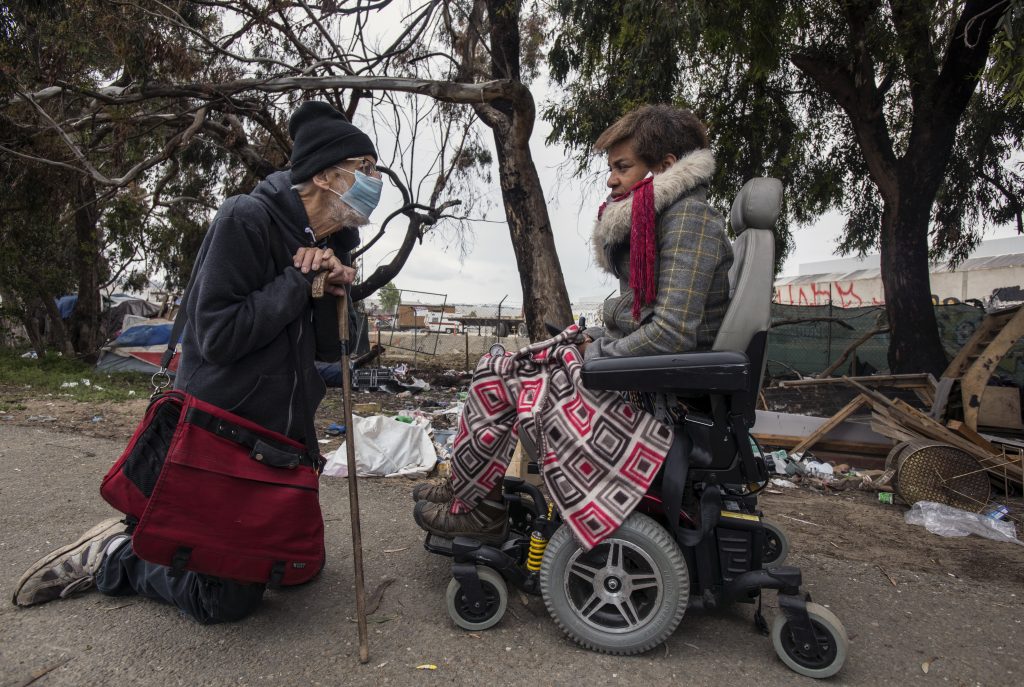
In April, a federal judge blocked the City of Emeryville from evicting six residents of an encampment on Shellmound Street. Along with Berkeley-based advocacy group Where Do We Go? (WDWGB), the encampment filed a suit arguing that it is illegal to evict them during the coronavirus pandemic. The court order will allow them to stay put until at least May 3.
When a vague notice appeared at the encampment on April 5, residents were not initially sure if their community would be closed. Still, the notice put them on guard: many have been homeless for years and have been forced to move in the past.
“Over the years, I been moving back and forth because I got to, when they say so,” said Frank Moore, one of the plaintiffs in the case. Moore has lived at the Shellmound encampment since it formed in 2018. The community comprises several sections that span three jurisdictions: the City of Emeryville, Caltrans, and the City of Berkeley. Moore says that he has moved across the road a few times between jurisdictions, but now there is no place left for him to go. That’s why he decided to sign on to being a plaintiff when a more formal eviction notice appeared at the encampment on April 15.
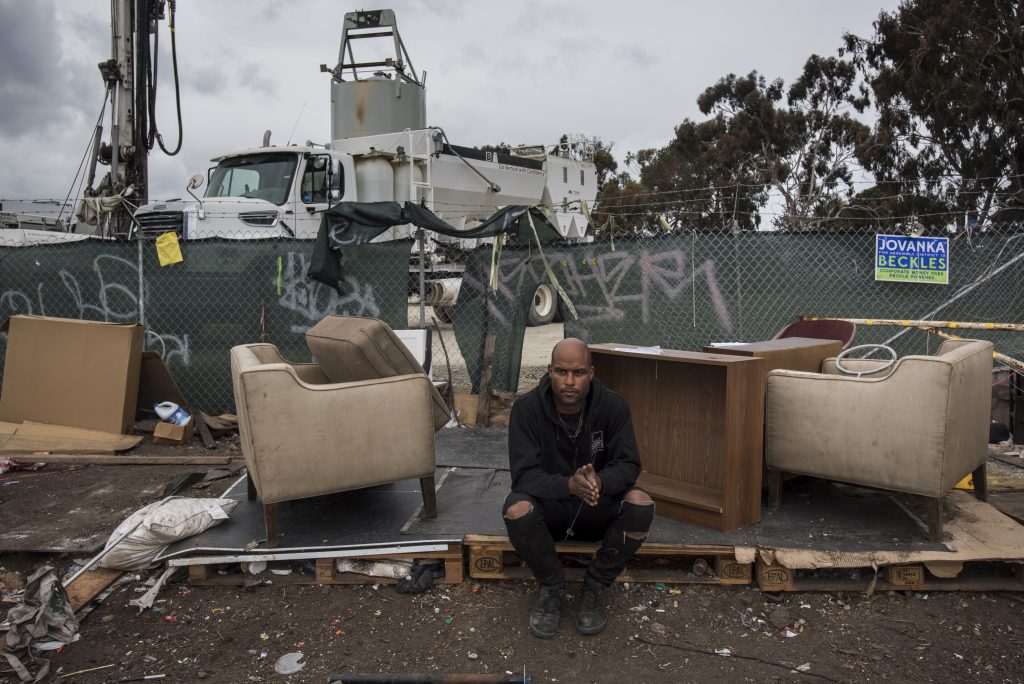
“Basically, that’s what it is: where else are we supposed to go?”
The encampment borders a construction site where real estate developer AMCAL is building a 186-unit condo complex, which will include just eight units for households earning 50 percent or less of the area median income—for Alameda County, $45,700 for an individual, or $52,200 for a household of two, according to the Housing and Community Development Department. On the April 15 notice, the city declared the encampment a “construction clearance safety area” and stated that it must close so development can continue.
Andrea Henson is a homeless advocate who was one of the founders of WDWGB and is now an attorney with the Eviction Defense Center. Henson told Street Spirit she thinks it’s absurd for encampment residents to be displaced to make room for the development. “It’s like, really? You’ve known about this encampment for two years, and now you’re building luxury housing? Next to a homeless encampment? But none of those folks can have one of those eight units? You only have 4 or 5 people [here]… Give them an apartment,” she says.
The Shellmound lawsuit is the latest in a series of recent legal actions to protect the rights of houseless people in California. Advocates are increasingly using the courts to do things like halt encampment evictions and fight parking bans—and in many cases, the unhoused plaintiffs are winning. The California Homeless Union recently convinced judges in Sausalito, Sacramento, and Santa Cruz to put a pause on encampment evictions, and a group of RV dwellers in Pacifica sued the city in March, attempting to block an ordinance that prohibits RVs from parking in certain parts of the city. Similar lawsuits have been filed in Sonoma County, Tulare County, San Diego, and Los Angeles.
“It’s really exciting. I think that the law is evolving,” anti-eviction attorney Henson says. “I think that—fortunately—courts, activists, people in our communities, leaders, are more concerned because [of COVID] and seeing that we have to protect our communities as a whole.”
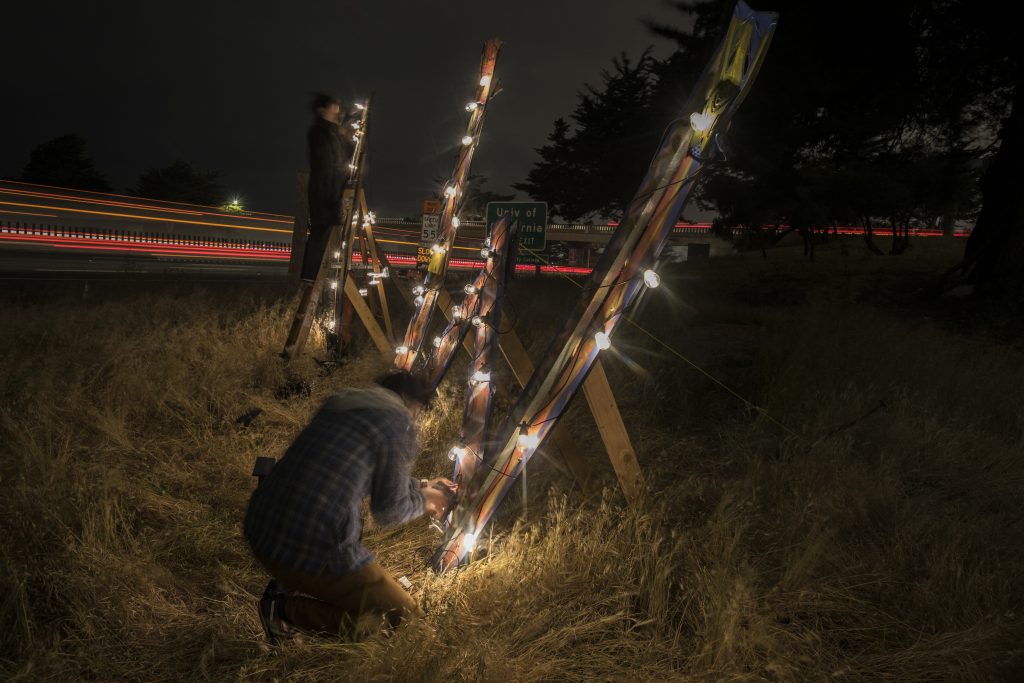
Moore says that he is willing to move indoors if given the right opportunity. “It just depends on if it is a good situation,” he says. He confirmed that Operation Dignity—the service provider that contracts with the City of Emeryville to navigate people into housing—had visited the Shellmound community a few weeks prior, and gave him a phone number to call to find out more about the options on offer. However, advocates with WDWGB—the Berkeley-based advocacy group that brought the lawsuit—say that Operation Dignity was difficult to reach in the weeks leading up to April 19, and that ultimately, the shelter they offered was inadequate.
“Shelter beds at St. Vincent DePaul, funded by the City of Emeryville, are available for individuals relocating from this area,” Emeryville City Clerk Sheri Hartz told the Mercury News.
Residents and advocates say that beds at St. Vincent are inadequate, particularly during the coronavirus pandemic, when congregate living creates serious health risks. Additionally, overnight shelter guests are only allowed a limited number of personal belongings and have to exit the shelter each morning with nowhere to go, as they wait for the shelter to re-open at night.
“[Residents] kind of feel like it’s going to make them actually homeless, because right now they have homes where they’re at. But to go to a shelter, it would have them permanently displaced,” says Cordova Morales.
Advocates also wanted to protect Shellmound residents from losing their belongings. When an encampment is closed, residents often lose valuable personal property—the stuff they don’t have time to pack, or that exceeds the limited amount allowed in congregate settings. Moore, for example, remembers losing photos and old clothing of his deceased grandmother during a sweep last year. This—the loss of important personal posessions during encampment sweeps—was the subject of a class action lawsuit that was settled last year and which required Caltrans to pay a $1.3 million settlement to homeless people who had their property destroyed in the state-sanctioned sweeps.
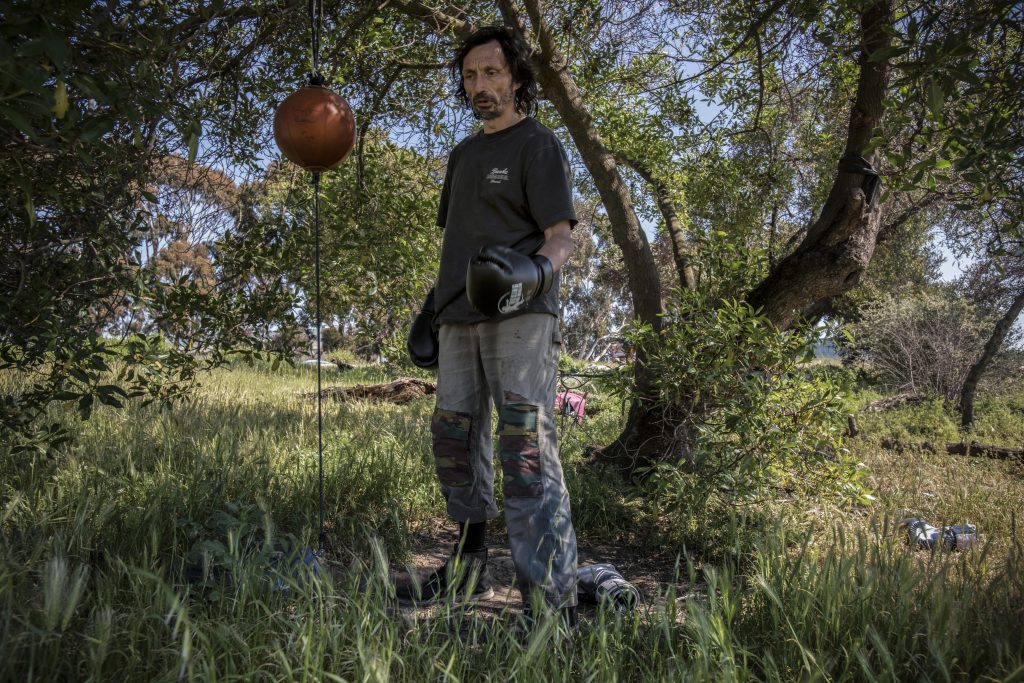
Staying in their current location would also allow Shellmound residents to maintain their ties to valuable resources and community groups. The encampment currently receives regular visits from groups like Berkeley’s LifeLong street medicine team, which provides medical care, and in recent months has successfully helped 10 or so residents move into housing. Several residents voiced concern that if they had to move, they would lose contact with groups they work with on a continuous basis, like LifeLong.
“If the camp gets broken up, we’re all going to have to go and try to track people down, keep tabs on people all over town, and make sure they’re safe,” says Cordova Morales.
On the morning of April 19, U.S. District Judge Yvonne Gonzalez Rodgers granted the encampment residents a temporary restraining order (TRO), prohibiting the city from closing the encampment until all residents are granted safe, individual housing. She will return to court on May 3, when she will consider whether to extend the temporary order. Meanwhile, the rest of the encampment, which sits on a neighboring parcel of land owned by Caltrans, could soon be evicted. That group of about 30 residents received their own eviction notice from the state agency in mid-April. As of now, it seems as though Caltrans is waiting to see what happens in court, but it is not clear whether they will follow the judge’s order or act independently.
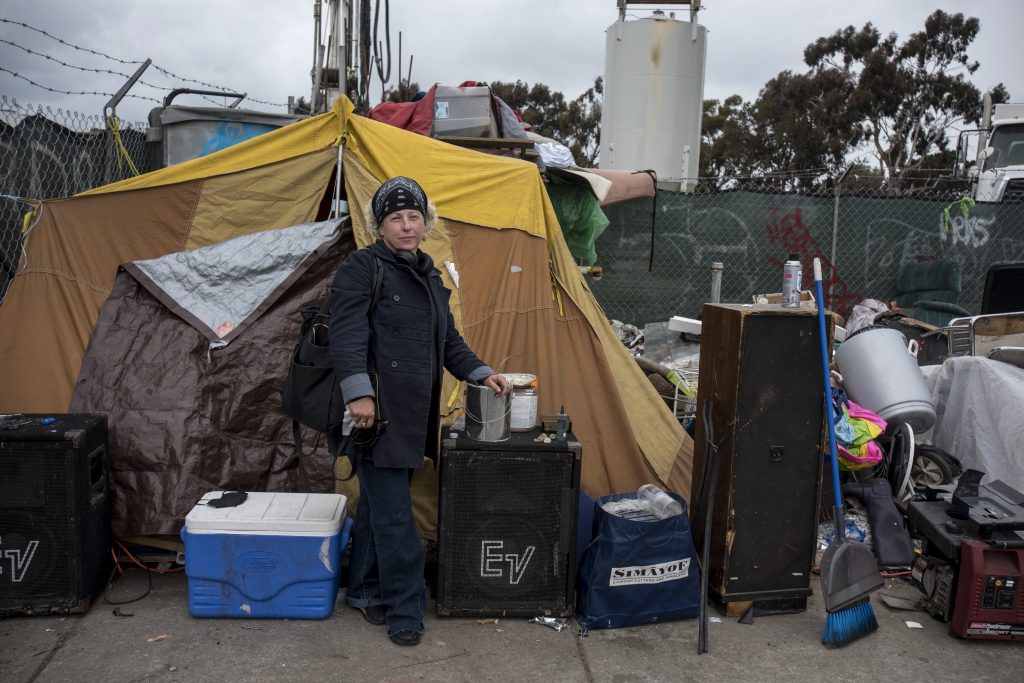
Even as lawsuits such as the one brought by WDWGB provide a hope that the law is changing incrementally, encampment residents must continue to live with the laws that displace them time and time again. Even so, the TRO allowed the community to breathe a sigh of relief. On the evening of April 22, two nights after the judge’s order stayed the eviction, a small group gathered to complete an art installation that encampment residents had been working on for weeks. With the guidance of community artist and Berkeley resident Suzi Garner, the group had constructed four letters out of wood and debris, spelling out “WDWG?” to represent, “Where Do We Go?” That night they erected the letters next to I-80 and decorated them with twinkle lights—each letter standing about eight feet tall. They listened to music, laughing and eating burritos, looking up at the artwork they built as traffic whirred by.
By morning, though, the letters were gone. “Yeah, they took everything,” an encampment resident named Grimm says in a video recorded on his phone after they were taken down. In the recording, a Caltrans employee sits in a truck nearby. “She’s just doing her job, I guess. She’s just doing what she’s supposed to do,” Grimm continues. Then he turns to walk back to his tent, and gives a heavy sigh. “What’s the point, anyway?”
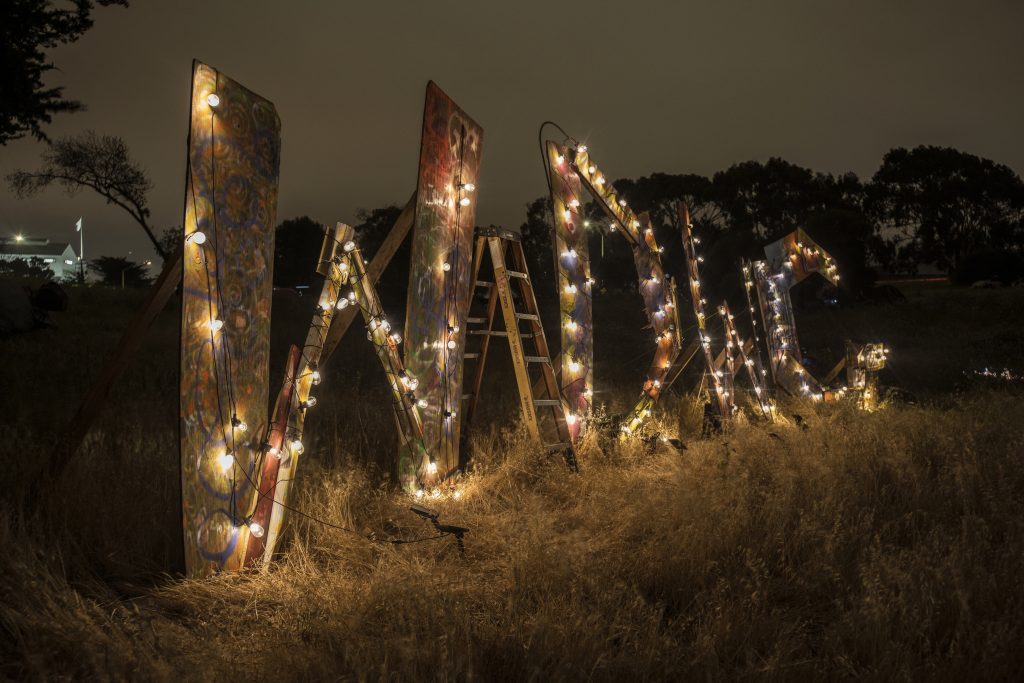
Alastair Boone is the Director of Street Spirit.
